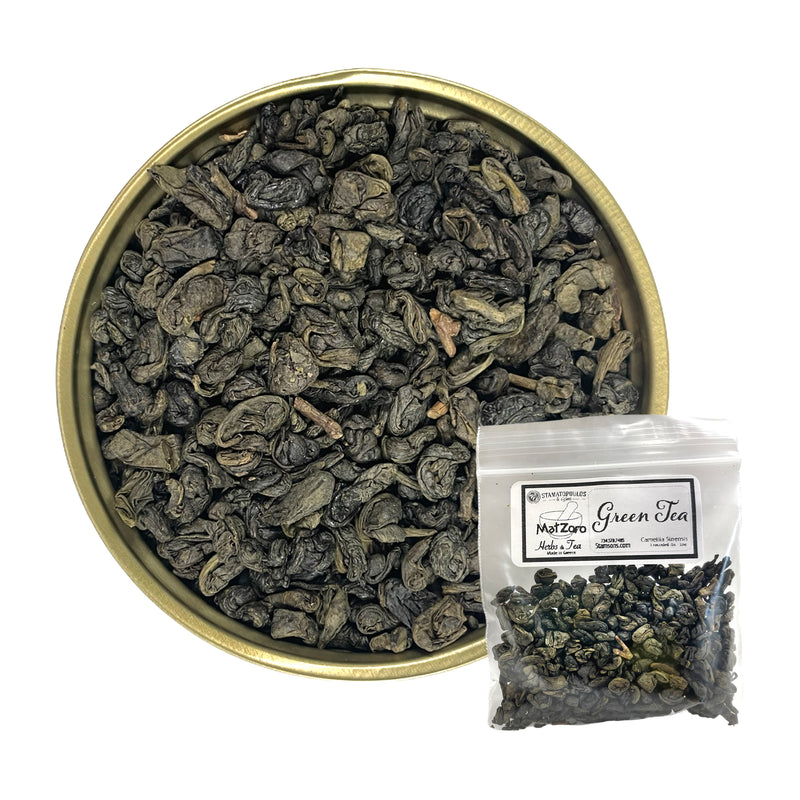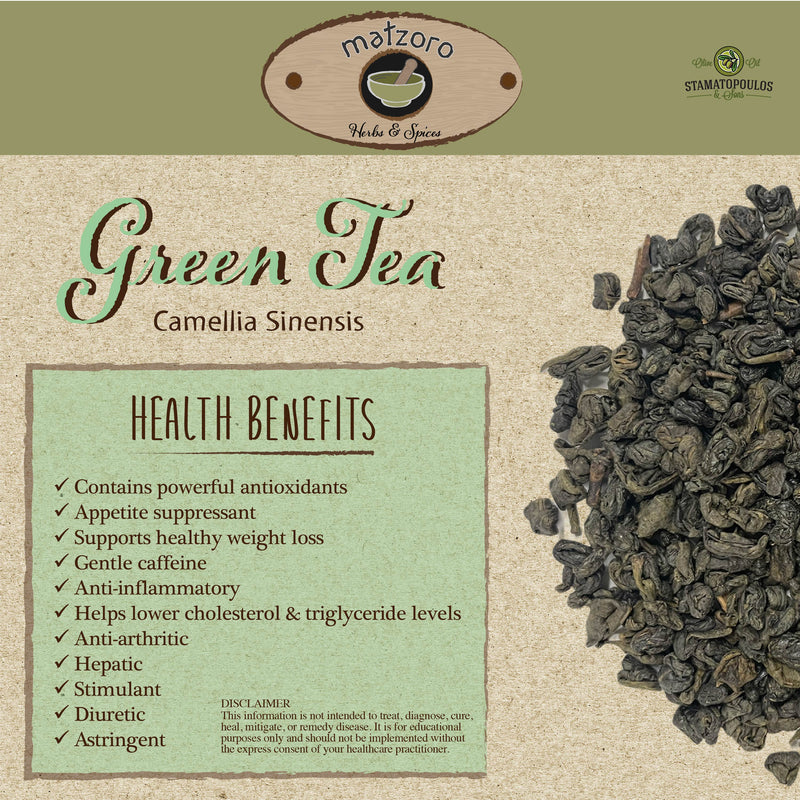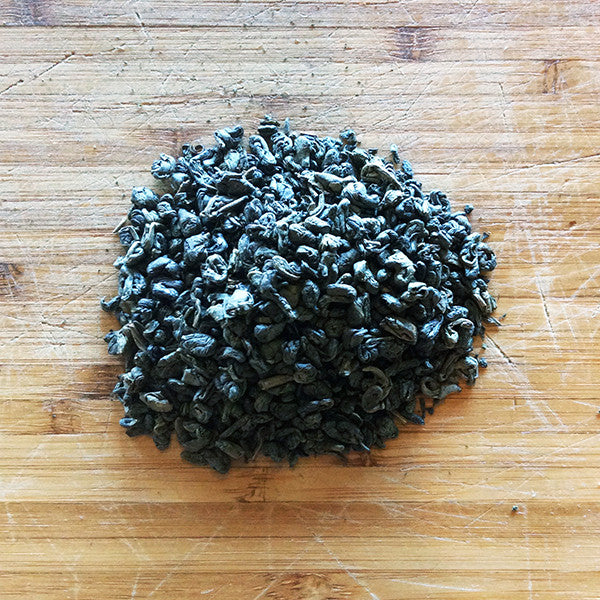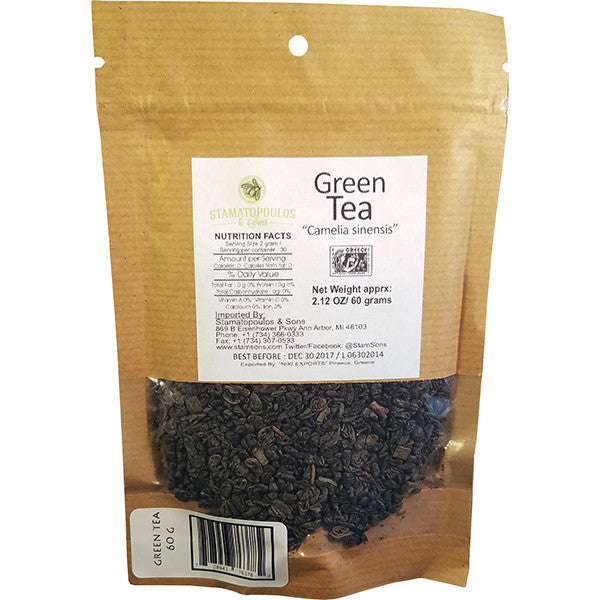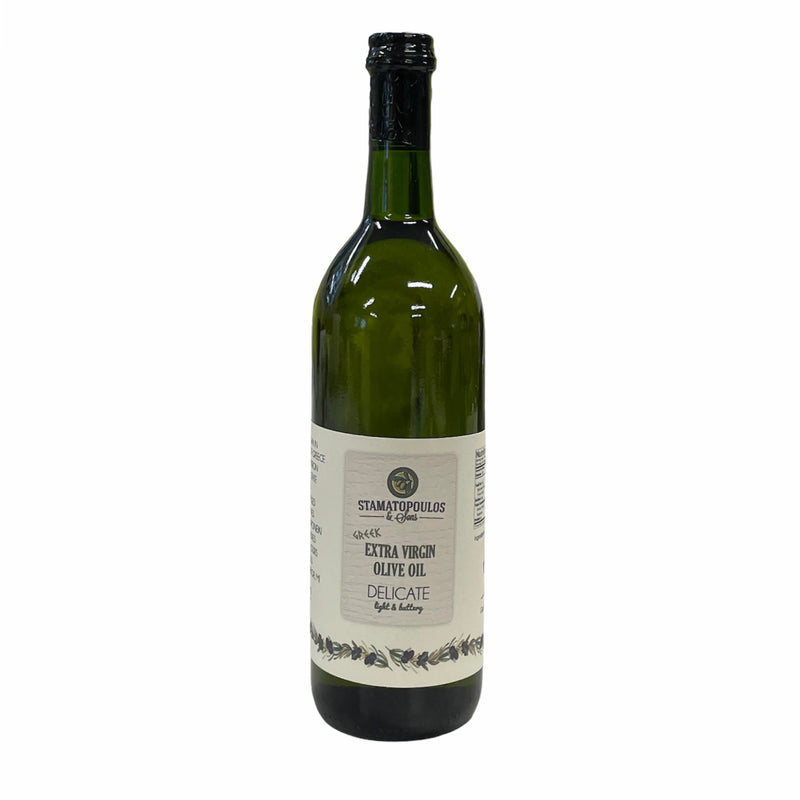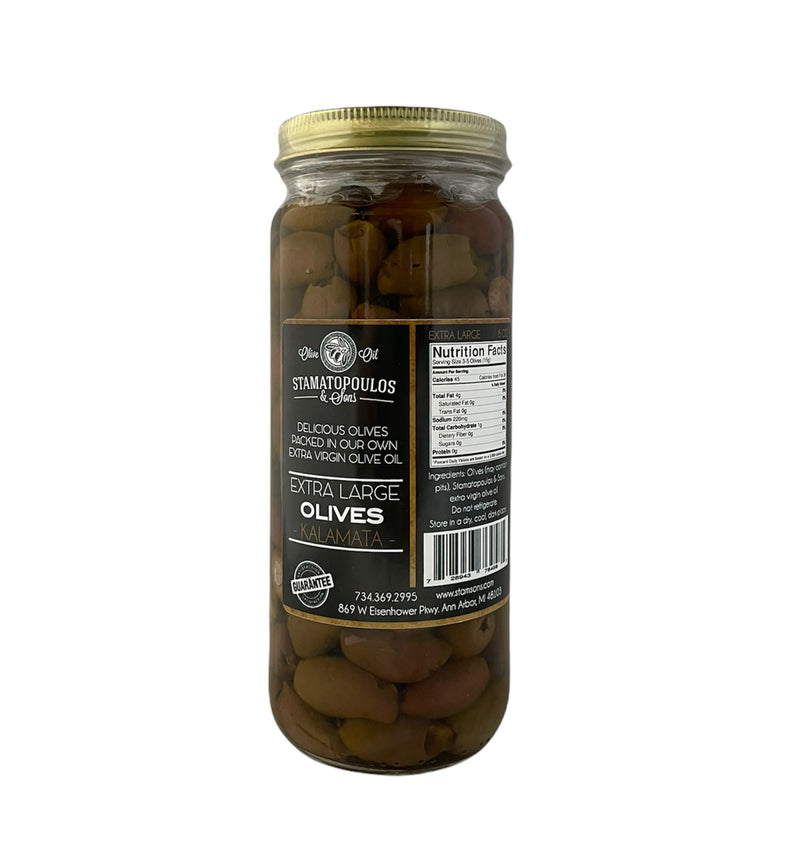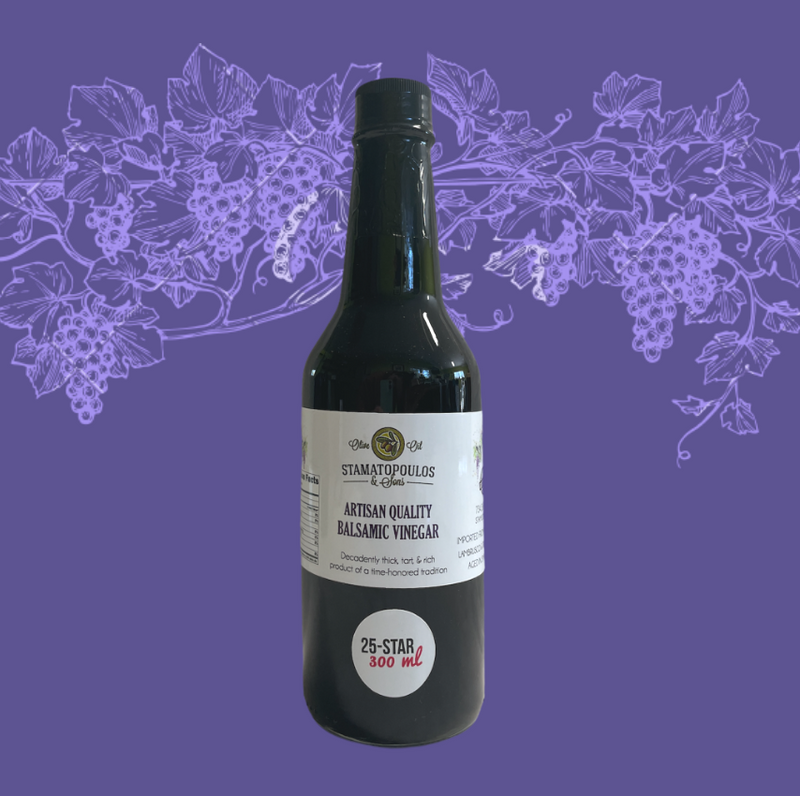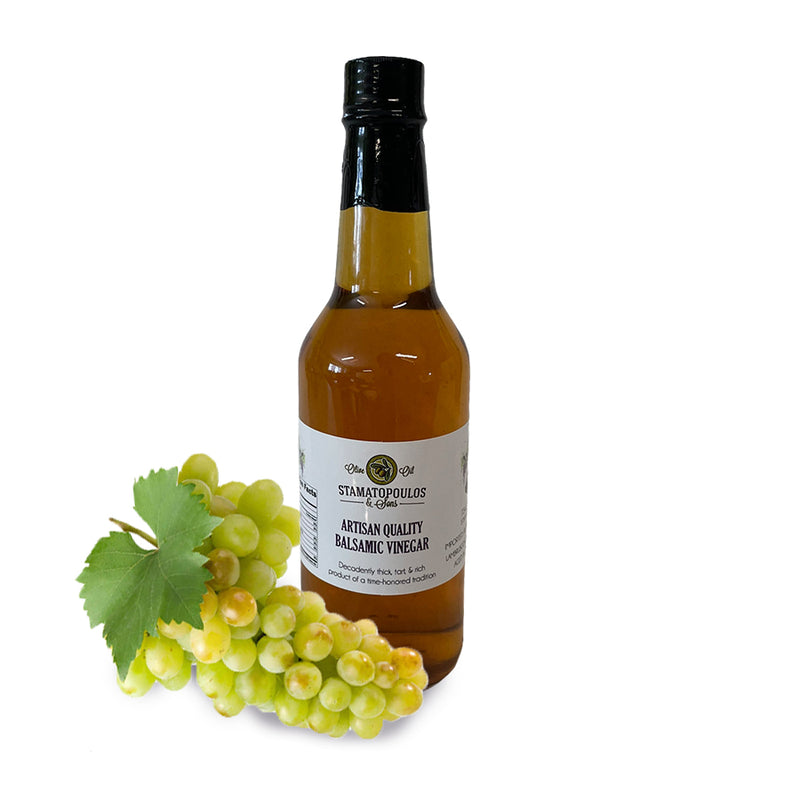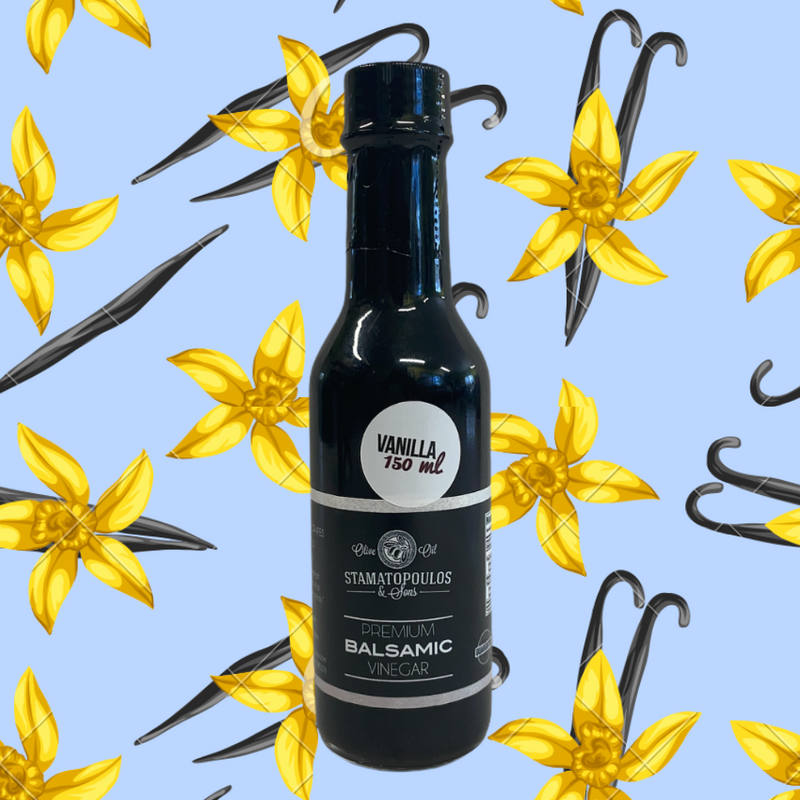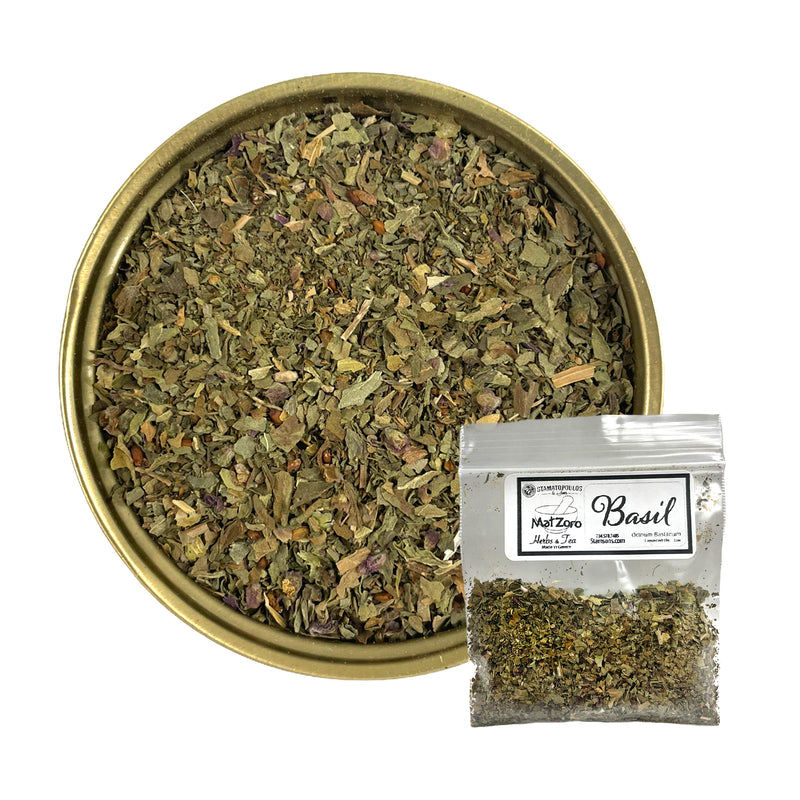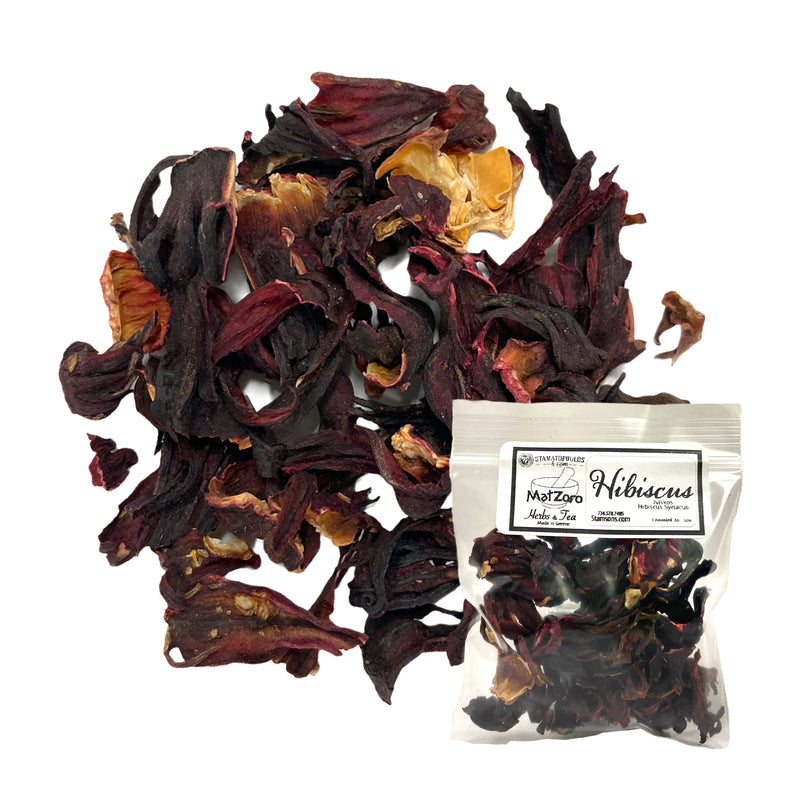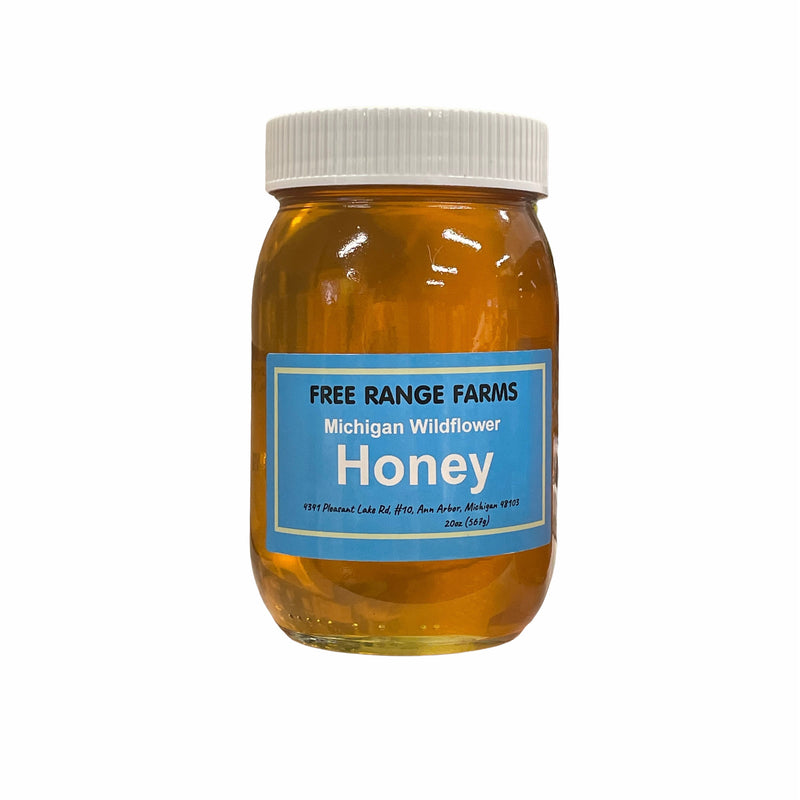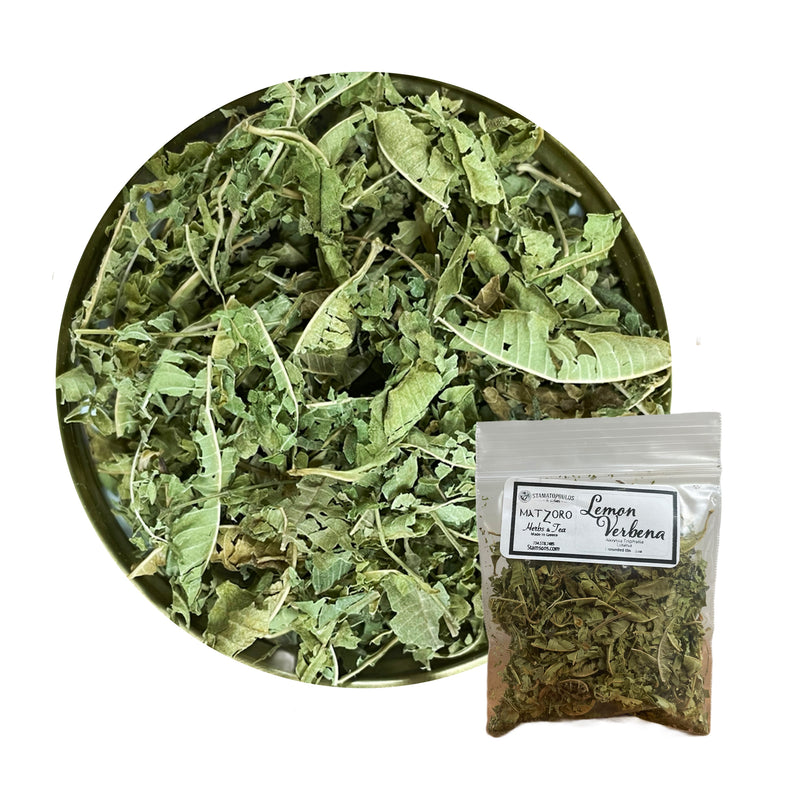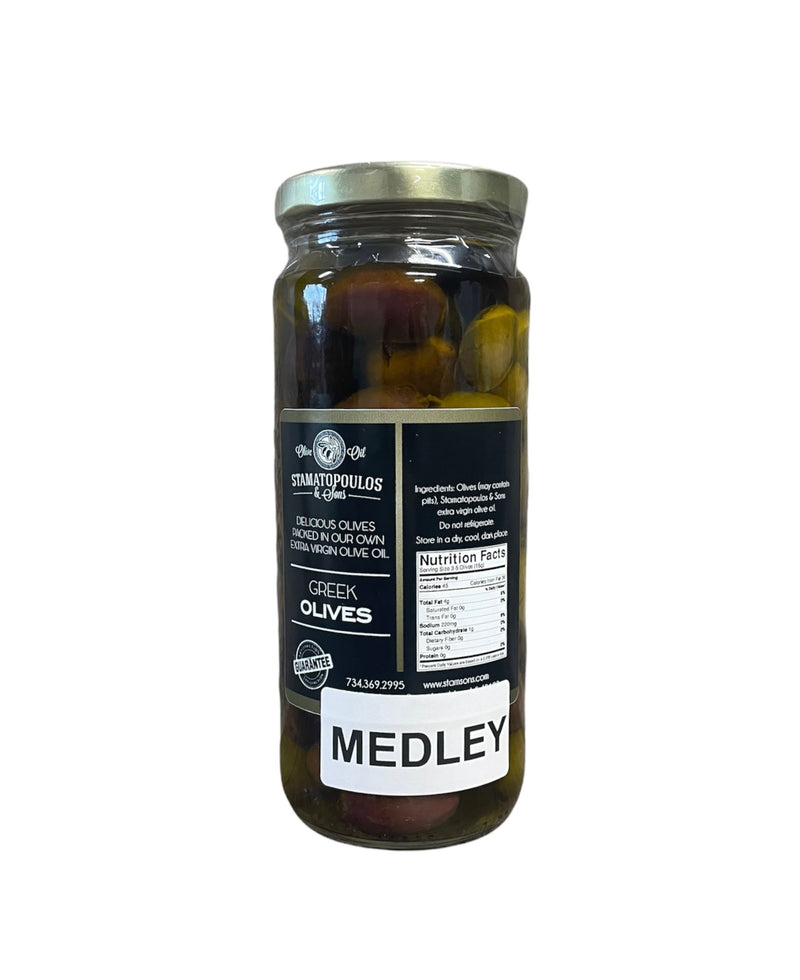{ "id":390462323, "title":"Green Tea","handle":"green-tea-camelia-sinensis-60-grams", "description":"\u003cp\u003e\u003cb\u003eGREEN TEA - \u003c\/b\u003e\u003cb\u003eCamelia sinensis -\u003c\/b\u003e \u003cb\u003eTheaceae Family\u003c\/b\u003e\u003cbr\u003e\u003c\/p\u003e\n\u003cp\u003e*Contains Caffeine* \u003c\/p\u003e\n\u003cp\u003e\u003cbr\u003e\u003cb\u003eHISTORY OF USE\u003c\/b\u003e\u003cbr\u003e\u003cspan style=\"font-weight: 400;\"\u003eGreen tea has been popularly used in China for over 3000 years, and was introduced to the rest of the world at the 1915 Panama World Expo, with one of China’s green teas winning “best tea in the world.” It is by far China’s most drunk tea.\u003c\/span\u003e\u003cbr\u003e\u003cspan style=\"font-weight: 400;\"\u003eTea has been cultivated for centuries, beginning in India and China. Today, tea is the most widely-consumed beverage in the world, second only to water. Hundreds of millions of people drink tea, and studies suggest that green tea (\u003c\/span\u003e\u003ci\u003e\u003cspan style=\"font-weight: 400;\"\u003eCamellia sinesis\u003c\/span\u003e\u003c\/i\u003e\u003cspan style=\"font-weight: 400;\"\u003e) in particular has many health benefits.\u003c\/span\u003e\u003cbr\u003e\u003cspan style=\"font-weight: 400;\"\u003eThere are 3 main varieties of tea -- green, black, and oolong. The difference is in how the teas are processed. Green tea is made from unfermented leaves and reportedly contains the highest concentration of powerful antioxidants called polyphenols. Antioxidants are substances that fight free radicals -- damaging compounds in the body that change cells, damage DNA, and even cause cell death. Many scientists believe that free radicals contribute to the aging process, as well as the development of a number of health problems, including cancer and heart disease. Antioxidants, such as polyphenols in green tea, can neutralize free radicals and may reduce or even help prevent some of the damage they cause.\u003c\/span\u003e\u003cbr\u003e\u003cspan style=\"font-weight: 400;\"\u003eIn traditional Chinese and Indian medicine, practitioners used green tea as a stimulant, a diuretic (to help rid the body of excess fluid), an astringent (to control bleeding and help heal wounds), and to improve heart health. Other traditional uses of green tea include treating gas, regulating body temperature and blood sugar, promoting digestion, and improving mental processes.\u003c\/span\u003e\u003cbr\u003e\u003cspan style=\"font-weight: 400;\"\u003eGreen tea has been extensively studied in people, animals, and laboratory experiments. \u003cbr\u003e\u003c\/span\u003e\u003cbr\u003e\u003cb\u003eMEDICINAL USE\u003c\/b\u003e\u003cbr\u003e\u003cspan style=\"font-weight: 400;\"\u003eResearch is showing benefits of green tea to include lowering risk of cancer, heart disease, and lowering cholesterol levels.\u003c\/span\u003e\u003cbr\u003e\u003cspan style=\"font-weight: 400;\"\u003eIt has less caffeine than coffee, and enhances a calm alertness without the stimulation associated with caffeine.\u003c\/span\u003e\u003cbr\u003e\u003cspan style=\"font-weight: 400;\"\u003eStudies show that green tea may increase metabolism and increases the number of calories burned, thereby assisting in weight loss, while also reducing appetite.\u003c\/span\u003e\u003cbr\u003e\u003cb\u003eAtherosclerosis: \u003c\/b\u003e\u003cspan style=\"font-weight: 400;\"\u003eThe antioxidant properties of green tea may help prevent atherosclerosis. Researchers believe green tea reduces the risk of heart disease by lowering cholesterol and triglyceride levels. In fact, researchers estimate that the rate of heart attack decreases by 11% with consumption of 3 cups of tea per day.\u003c\/span\u003e\u003cbr\u003e\u003cb\u003eHigh cholesterol: \u003c\/b\u003e\u003cspan style=\"font-weight: 400;\"\u003eResearch shows that green tea lowers total cholesterol and raises HDL (\"good\") cholesterol in both animals and people.\u003c\/span\u003e\u003cbr\u003e\u003cb\u003eCancer: \u003c\/b\u003e\u003cspan style=\"font-weight: 400;\"\u003ethe polyphenols in tea, especially green tea, may play an important role in the prevention of cancer. Researchers also believe that polyphenols help kill cancerous cells and stop them from growing.\u003c\/span\u003e\u003cbr\u003e\u003cb\u003eInflammatory Bowel Disease (IBD): \u003c\/b\u003e\u003cspan style=\"font-weight: 400;\"\u003eGreen tea may help reduce inflammation associated with Crohn's disease and ulcerative colitis, the two types of IBD. \u003c\/span\u003e\u003cbr\u003e\u003cb\u003eDiabetes: \u003c\/b\u003e\u003cspan style=\"font-weight: 400;\"\u003eGreen tea has been used traditionally to control blood sugar levels. Animal studies suggest that green tea may help prevent the development of type 1 diabetes and slow the progression once it has developed. In people with type 1 diabetes, their bodies make little or no insulin, which helps convert glucose or sugar into energy. Green tea may help regulate glucose in the body.\u003c\/span\u003e\u003cbr\u003e\u003cb\u003eLiver disease: \u003c\/b\u003e\u003cspan style=\"font-weight: 400;\"\u003ePopulation-based studies have shown that men who drink more than 10 cups of green tea per day are less likely to develop liver problems. Green tea also seems to protect the liver from the damaging effects of toxic substances such as alcohol. Animal studies have shown that green tea helps protect against liver tumors in mice. Catechins, the plant chemicals in green tea, may help treat viral hepatitis, an inflammation of the liver.\u003c\/span\u003e\u003cbr\u003e\u003cb\u003eWeight loss: \u003c\/b\u003e\u003cspan style=\"font-weight: 400;\"\u003eClinical studies suggest that green tea extract may boost metabolism and help burn fat. \u003c\/span\u003e\u003cbr\u003e\u003cb\u003eOther uses: \u003c\/b\u003e\u003cspan style=\"font-weight: 400;\"\u003ePreliminary studies suggest that drinking green tea can help prevent dental cavities. More studies need to be done. Green tea may also be useful in inflammatory diseases, such as arthritis. Research suggests that green tea may help arthritis by reducing inflammation and slowing the breakdown of cartilage. Chemicals in green tea may help treat genital warts, treat dermatologic conditions, and prevent symptoms of colds and flu. Green tea may play a role in preventive Parkinson's disease and osteoporosis. Studies also show that drinking green tea is associated with reduced risk of dying from any disease.\u003cbr\u003e\u003c\/span\u003e\u003cbr\u003e\u003cstrong\u003eHERBAL ACTIONS \u003cbr\u003e\u003c\/strong\u003e\u003cspan style=\"font-weight: 400;\"\u003eAntioxidant, anti-inflammatory, antitumor, anti-arthritic, hepatic, stimulant, diuretic, astringent\u003cbr\u003e\u003c\/span\u003e\u003cbr\u003e\u003cstrong\u003eCULINARY USE\u003c\/strong\u003e\u003cbr\u003e\u003cspan style=\"font-weight: 400;\"\u003eGreen tea can add an earthy flavor to many dishes. Instead of using water, try making an herbal infusion and then using that to cook noodles. Green tea can also be used to poach pears, added in salad dressings, rice, soups, stir-fries, batter, marinades, sauces, etc. Try combining green tea with a fruity juice such as cherry, pineapple, or peach.\u003cbr\u003e\u003c\/span\u003e\u003cbr\u003e\u003cb\u003eFLAVOR \u0026amp; ENERGETICS\u003c\/b\u003e\u003cbr\u003e\u003cspan style=\"font-weight: 400;\"\u003eastringent\u003cbr\u003e\u003c\/span\u003e\u003cbr\u003e\u003cb\u003eCONSTITUENTS\u003c\/b\u003e\u003cbr\u003e\u003cspan style=\"font-weight: 400;\"\u003eGreen tea has the best food source of the antioxidants called catechins. Green tea is high in the amino acid L-theanine, which aids mental concentration.\u003cbr\u003e\u003c\/span\u003e\u003cbr\u003e\u003cb\u003eCAUTIONS\u003c\/b\u003e\u003cbr\u003e\u003cspan style=\"font-weight: 400;\"\u003eTannins can interrupt iron absorption in the body, as they bind with iron. Adding lemon juice to one’s tea can alleviate this. Otherwise, green tea is considered safe to drink daily.\u003cbr\u003e\u003c\/span\u003e\u003cbr\u003e\u003cb\u003eTEA BLENDS\u003c\/b\u003e\u003cbr\u003e\u003cspan style=\"font-weight: 400;\"\u003eGreen tea is mild yet drying, so it combines well with a sweet demulcent, such as licorice root or marshmallow root.\u003cbr\u003e\u003c\/span\u003e\u003cbr\u003e\u003cb\u003eDISCLAIMER\u003c\/b\u003e\u003cbr\u003e\u003cspan style=\"font-weight: 400;\"\u003eThis information is not intended to treat, diagnose, cure, heal, mitigate, or remedy disease. It is for educational purposes only and should not be implemented without the express consent of your healthcare practitioner.\u003c\/span\u003e\u003c\/p\u003e", "published_at":"2014-10-21T21:30:00", "created_at":"2014-10-21T21:30:25", "vendor":"Stamatopoulos \u0026 Sons", "type":"Herbs, Teas, \u0026 Spices", "tags":["Herbs \u0026 Spices \u0026 Teas"], "price":100, "price_min":100, "price_max":700, "price_varies":true, "compare_at_price":null, "compare_at_price_min":0, "compare_at_price_max":0, "compare_at_price_varies":false, "all_variant_ids":[914934907,37442820684], "variants":[{"id":914934907,"title":"60g","option1":"60g","option2":null,"option3":null,"sku":"728943763782","requires_shipping":true,"taxable":false,"featured_image":{"id":22591050700,"product_id":390462323,"position":4,"created_at":"2017-02-23T14:43:39-05:00","updated_at":"2021-01-21T15:21:17-05:00","alt":null,"width":600,"height":600,"src":"\/\/stamsons.com\/cdn\/shop\/products\/600_x_600_Green_tea.jpg?v=1611260477","variant_ids":[914934907]},"available":true,"name":"Green Tea - 60g","public_title":"60g","options":["60g"],"price":700,"weight":60,"compare_at_price":null,"inventory_quantity":7,"inventory_management":"shopify","inventory_policy":"deny","barcode":"728943763782","featured_media":{"alt":null,"id":8951955535,"position":4,"preview_image":{"aspect_ratio":1.0,"height":600,"width":600,"src":"\/\/stamsons.com\/cdn\/shop\/products\/600_x_600_Green_tea.jpg?v=1611260477"}},"requires_selling_plan":false,"selling_plan_allocations":[]},{"id":37442820684,"title":"0.1oz","option1":"0.1oz","option2":null,"option3":null,"sku":"728943763783b","requires_shipping":true,"taxable":false,"featured_image":{"id":16119981408335,"product_id":390462323,"position":1,"created_at":"2021-01-21T15:21:16-05:00","updated_at":"2021-01-21T15:21:17-05:00","alt":null,"width":3000,"height":3000,"src":"\/\/stamsons.com\/cdn\/shop\/products\/greentea.jpg?v=1611260477","variant_ids":[37442820684]},"available":true,"name":"Green Tea - 0.1oz","public_title":"0.1oz","options":["0.1oz"],"price":100,"weight":60,"compare_at_price":null,"inventory_quantity":15,"inventory_management":"shopify","inventory_policy":"deny","barcode":"728943763782","featured_media":{"alt":null,"id":8294049251407,"position":1,"preview_image":{"aspect_ratio":1.0,"height":3000,"width":3000,"src":"\/\/stamsons.com\/cdn\/shop\/products\/greentea.jpg?v=1611260477"}},"requires_selling_plan":false,"selling_plan_allocations":[]}], "available":null,"images":["\/\/stamsons.com\/cdn\/shop\/products\/greentea.jpg?v=1611260477","\/\/stamsons.com\/cdn\/shop\/products\/Amazoninfographics_GreenTea.jpg?v=1611260477","\/\/stamsons.com\/cdn\/shop\/products\/600_x_600_green_tea1.jpg?v=1611260477","\/\/stamsons.com\/cdn\/shop\/products\/600_x_600_Green_tea.jpg?v=1611260477"],"featured_image":"\/\/stamsons.com\/cdn\/shop\/products\/greentea.jpg?v=1611260477", "options":["Size"], "url":"\/products\/green-tea-camelia-sinensis-60-grams"}
Green Tea
Related Products
Delicate Extra Virgin Olive Oil - GS
From $ 16.00
25* Balsamic Vinegar Dark
$ 25.00
6* Balsamic Vinegar White
From $ 8.00
Vanilla Balsamic Vinegar
$ 10.00
Apple Balsamic Vinegar
$ 15.00
Basil
From $ 0.99
Hibiscus
From $ 1.00
Free Range Farms Honey
$ 20.00
Lemon Verbena
From $ 1.00
Olive Medley
$ 9.00

